
Nguyen Thi Phuong Thao / Tạp chí Khoa học và Công nghệ Đại học Duy Tân 02(69) (2025) 50-54
50
D U Y T A N U N I V E R S I T Y
Early-stage observation of nanosecond laser-induced breakdown in air
Quan sát giai đoạn ban đầu của quá trình đánh thủng bằng tia laser trong không khí
Nguyen Thi Phuong Thaoa,b*
Nguyễn Thị Phương Thảoa,b*
aInstitute of Research and Development, Duy Tan University, Danang, 550000, Viet Nam
aViện Nghiên cứu và Phát triển Công nghệ cao, Đại học Duy Tân, Đà Nẵng, Việt Nam
bFaculty of Environmental and Natural Sciences, School of Engineering and Technology, Duy Tan University,
Da Nang, 550000, Viet Nam
bKhoa Môi trường và Khoa học tự nhiên, Trường Công nghệ và Kỹ thuật, Ðại học Duy Tân, Ðà Nẵng, Việt Nam
(Date of receiving article: 19/09/2024, date of completion of review: 02/10/2024, date of acceptance for posting:
08/10/2024)
Abstract
We focused a nanosecond laser pulse in normal air and observed the expansion of laser-induced plasma and shock
waves during the pulse. Our observation revealed that most of the laser energy was not absorbed in the focal region but
at the tip of the breakdown zone. As the breakdown occurred, the plasma expanded more rapidly vertically than
horizontally, resulting in an inverted water-drop shape at the end of the laser pulse. Compared to a breakdown in water,
the plasma in the air grew faster.
Keywords: Laser-induced breakdown in air; early-stage expansion; laser-supported absorption wave.
Tóm tắt
Chúng tôi hội tụ một chùm tia laser nano giây trong không khí và quan sát sự giãn nở của plasma và sóng xung kích
trong khoảng thời gian độ dài của xung. Chúng tôi thấy rằng phần lớn năng lượng laser không được hấp thụ tại mặt phẳng
tiêu điểm của chùm tia mà tại đỉnh của vùng đánh thủng. Trong suốt quá trình đánh thủng, plasma phát triển nhanh hơn
theo phương đứng so với phương ngang, và có hình dạng giọt nước ngược vào thời điểm kết thúc xung laser. So với quá
trình đánh thủng trong nước, plasma trong không khí phát triển nhanh hơn.
Từ khóa: Đánh thủng không khí bằng tia laser; quá trình giãn nở sớm; sóng hấp thụ hỗ trợ bởi laser.
1. Introduction
Air is transparent to light. However, when
tightly focusing a laser beam in ambient air, the
intensity at the focal region can be extremely
high, reaching the level of 𝑇𝑊𝑐𝑚−2. This high
optical intensity generates seed electrons
through the multiphoton ionization process at
*Corresponding author: Nguyen Thi Phuong Thao
Email: phuongnguyen.nut@gmail.com
the front of the laser pulse [1,2]. These initial
electrons then absorb the rest of the laser pulse
energy and create a plasma, following by a rapid
expansion of shockwave from the energy release
point [3]. This whole process is known as laser-
induced breakdown.
02(69) (2025) 50-54
DTU Journal of Science and Technology

Nguyen Thi Phuong Thao / Tạp chí Khoa học và Công nghệ Đại học Duy Tân 02(69) (2025) 50-54
51
Laser-induced breakdown in air has many
applications, including laser propulsion, laser
ignition of combustible gas, laser-induced
nuclear fusion and laser-induced breakdown
spectroscopy [1,4,5]. Laser-induced breakdown
in air can also be a severe problem in laser
machining since it significantly reduces the
amount of energy reaching the target and affects
the machining efficiency and accuracy. Thus, it
is important to understand the mechanism of
laser-induced breakdown in air, especially
during the early stage.
In this paper, we present a direct observation
of the early expansion of the laser-induced
breakdown zone from the beginning of laser
pulse until 100 𝑛𝑠 after irradiation. The
observation was made using time-resolved
shadowgraph imaging technique. We also
compared the laser-induced breakdown in air
and underwater.
2. Experimental set up
We used a Q-switched Nd:YAG laser to
deliver a laser pulse at the fundamental
wavelength of 𝟏𝟎𝟔𝟒 𝒏𝒎 (pump laser). The
pulse full width duration is 𝟒𝟎 𝒏𝒔. The beam is
focused by a 5x objective lens in the air to induce
the breakdown. Pulse energy was 𝟔𝟎 𝒎𝑱,
equivalent to an intensity of 𝟎. 𝟓 ×
𝟏𝟎𝟏𝟐 𝑾𝒄𝒎−𝟐 at the focal plane.
The laser-induced breakdown was observed
using a conventional pump-and-probe imaging
technique. We used another laser source to
provide the illumination beam at a wavelength
of 𝟓𝟑𝟐 𝒏𝒎 (probe laser). We regulated the
delay time between the pump laser and the probe
laser using an optical delay system or a delay
generator. The image was captured using an
ICCD camera (Fig.1). Details of the imaging
system can be found in our previous report [6].
Figure 1. Diagram of the imaging system.
3. Results and discussion
Figure 2 shows the evolution of breakdown in
normal air from the beginning of the laser pulse
until 100 𝑛𝑠 after irradiation. At the beginning
of the laser pulse, the breakdown occurred at the
best focus position. Because the plasma induced
at the breakdown deflects light, it appeared as a
tiny shadow in the image. This initial plasma has
a length of 0.2 𝑚𝑚, approximately the system’s
depth-of-focal.
During the laser pulse, the initial
breakdown zone rapidly expanded towards the
laser beam and reached a size of 1.2 𝑚𝑚 at
40 𝑛𝑠 (end of laser pulse). The rapid expansion
of plasma generated a shock wave in the air.
When the laser pulse was turned off, the shock
wave continued propagating in the air while
the plasma cooled down and became
transparent. However, the induced shockwave
was still visible, manifesting itself as a thin
Pump beam
Probe beam
Len 1
Len 2
Bandpass filter
ICCD camera
Objective len

Nguyen Thi Phuong Thao / Tạp chí Khoa học và Công nghệ Đại học Duy Tân 02(69) (2025) 50-54
52
wave in the image. The induced shockwave
continued to propagate in the air and reached a size of 2 𝑚𝑚 in the vertical direction at
100 𝑛𝑠.
Figure 2. Early-stage expansion of nanosecond-laser-induced breakdown in air.
Our observation showed that the plasma
expanded more rapidly in the vertical direction
than in the horizontal direction during the laser
pulse. Within the pulse, the average growing
velocity of the breakdown zone was estimated to
be approximately 2.5 × 104 𝑚𝑠−1 vertically and
1.3 × 104 𝑚𝑠−1 horrizontally. The high
pressure of ionized gas caused the plasma to
expand. Additionally, the vertical expansion was
also supported by the coming laser, leading to a
rapid growth of the plasma toward the laser
source.
In Fig. 3, with appropriate adjustments to the
imaging system, we were able to capture the
plasma and shock wave simultaneously. The
image showed that the brightest region of plasma
was not observed at the focal plane, but slightly
above it. It is commonly believed that the focal
point is located at the center of the observed
plasma. However, our observation indicates that
the focal plane is actually at the lower end of the
plasma zone, and the energy absorption point
moves upward during the energy deposition
process.
Figure 3. Plasma observed at 50 ns delay time.
The growth of plasma vertically during the
laser pulse is known as the laser-supported
absorption wave (LSAW), which has
qualitatively different features at different
ablation conditions: laser breakdown wave, fast
ionization wave, laser-supported radiation wave,
laser-supported detonation, and laser-supported
combustion wave [4,7,8]. Since the intensity at
focal point in our experiment exceeded the
breakdown threshold in air (1010𝑊𝑐𝑚−2) [4,9],
the laser breakdown wave primarily occurred in
the focal region. The electron density here
rapidly approached the critical value, preventing
further energy absorption in the focal region.

Nguyen Thi Phuong Thao / Tạp chí Khoa học và Công nghệ Đại học Duy Tân 02(69) (2025) 50-54
53
However, the initial plasma acted as a radiation
source that ionized the air to create free
electrons, which continue to absorb the coming
laser. Through this mechanism, the plasma grew
vertically toward the laser source during the
laser pulse, with most of the laser energy being
absorbed in a thin layer at the tip of the growing
plasma. Consequently, the plasma formed an
inverse water-drop shape, larger at the tip, as
observed in our image.
Figure 4. A comparison of laser-induced breakdown in air and in water.
This observation is consistent with previous
observation of laser-induced breakdown in
water, where the laser energy initially generates
the plasma at the focal point, which continues to
expand throughout the rest of the laser pulse and
moves toward the laser source [10,11]. In Fig. 4,
we compared the laser-induced breakdown in
water and in air at delays time 50 𝑛𝑠 and
1500 𝑛𝑠 after the energy release. Because of the
water's confinement effect on the expansion of
plasma, the breakdown zone in air developed
faster than in water during the laser pulse,
resulting in a larger size observed at 50 𝑛𝑠.
However, the induced shock wave propagated
much faster in water than in air, as being
observed at 1500 𝑛s. The plasma in the air died
after a few hundreds of nanoseconds and was not
visible at late delay time. In contrast, the plasma
in water instituted a cavitation bubble, which
appeared as the dark area at the center of the
shock wave.
The observation of laser-induced breakdown
has been the subject of extensive researches,
with primary focus on the process during the
later stages. Our work provides a direct
visualization of the initial expansion of laser-
induced breakdown. Our results enhance the
understanding of the growth mechanism of
nanosecond laser-induced plasma in air and are
beneficial for optimizing associated processes.
4. Conclusions
We conducted a study on the laser-induced
breakdown zone from the beginning of laser
pulse to a hundred nanoseconds after irradiation.
This work provides a direct observation of the
plasma growth during the energy deposition
process. Initially, the laser induces a breakdown
at the focal plane, which then expands toward
the laser source at a velocity in the order of
104 𝑚𝑠−1 during the laser pulse. The majority
of the laser energy is absorbed in a thin layer at
the tip of the growing plasma, resulting in the
breakdown zone taking on an inverse water-drop
shape. The brightest region of plasma is not
observed at the focal plane, but slightly above it.

Nguyen Thi Phuong Thao / Tạp chí Khoa học và Công nghệ Đại học Duy Tân 02(69) (2025) 50-54
54
Acknowledgment
The results presented in this paper are based
on the experiments conducted at the Laser
Laboratory, Nagaoka University of Technology,
Japan. We appreciate the support from Emeritus
Prof. Yoshiro Ito from the Nagaoka University
of Technology, and Associate Prof. Tanabe from
the Fukuoka Institute of Technology.
References
[1] Liu, D., Chen, C., Man, B., Sun, Y. & Li, F. (2016).
“Theoretical and experimental investigations on the
threshold of a laser-induced breakdown of air”.
Chinese Opt. Lett. (14), 040202.
[2] Lim, H. H. & Taira, T. (2017). “Sub-nanosecond
laser induced air-breakdown with giant-pulse
duration tuned Nd:YAG ceramic micro-laser by
cavity-length control”. Opt. Express (25), 6302.
[3] Alnama, K., Sulaiman, N. & Ibrahim, I. (2021).
“Spatio-temporal behavior of laser induced plasma
shock wave probed by optical beam deflection
technique”. Optik. (246), 167832.
[4] Ilyin, A. A., Nagorny, I. G. & Bukin, O. A. (2010).
“Supersonic regimes of plasma expansion during
optical breakdown in air”. Appl. Phys. Lett. (96),
171501.
[5] Ilyin, A. A., Bukin, O. A. & Bulanov, A. V. (208).
“Regimes of laser plasma expansion at optical
breakdown in the normal atmosphere”. Tech. Phys.
(53), 693–696.
[6] Nguyen, T. T. P., Tanabe, R. & Ito, Y. (2013).
“Effects of an absorptive coating on the dynamics of
underwater laser-induced shock process”. Appl.
Phys. A (116), 1109–1117.
[7] Nguyen, T. T. P., Tanabe, R. & Ito, Y. (2013).
“Influences of Focusing Conditions on Dynamics of
Laser Ablation at a Solid–Liquid Interface”. Appl.
Phys. Express (6), 122701.
[8] Noack, J. & Vogel, A. (1999). “Laser-induced
plasma formation in water at nanosecond to
femtosecond time scales: calculation of thresholds,
absorption coefficients, and energy density”. IEEE J.
Quantum Electron. (35), 1156–1167.
[9] Shimamura, K., Yokota, I. & Yokota, S. (2019).
“Characterization of the fast ionization wave induced
by a CO2 laser pulse in argon”. J. Appl. Phys. 126.
[10] Nguyen, T. T. P., Tanabe, R. & Ito, Y. (2018).
“Comparative study of the expansion dynamics of
laser-driven plasma and shock wave in in-air and
underwater ablation regimes”. Opt. Laser Technol.
(100), 21–26.
[11] Welch, E., Matteo, D., Tochitsky, S., Louwrens, G.
& Joshi, C. (2022). “Observation of breakdown wave
mechanism in avalanche ionization produced
atmospheric plasma generated by a picosecond
CO2laser”. Phys. Plasmas (29), 053504.


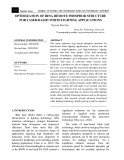
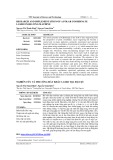
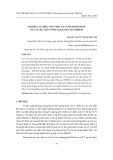
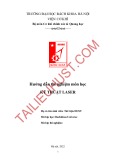
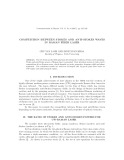
![Giáo trình Công nghệ laser Phần 1: [Thêm thông tin chi tiết để tối ưu SEO]](https://cdn.tailieu.vn/images/document/thumbnail/2015/20151207/gaugau1905/135x160/66221901.jpg)
![Tài liệu Laser: Tổng hợp [mô tả chi tiết hơn về loại tài liệu hoặc ứng dụng]](https://cdn.tailieu.vn/images/document/thumbnail/2015/20150311/dmanh87/135x160/1746414_346.jpg)
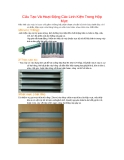

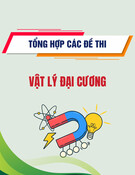

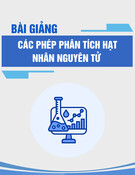

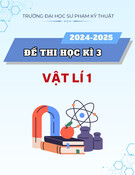



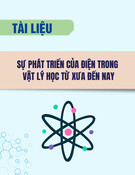
![Bộ câu hỏi lý thuyết Vật lý đại cương 2 [chuẩn nhất/mới nhất]](https://cdn.tailieu.vn/images/document/thumbnail/2025/20251003/kimphuong1001/135x160/74511759476041.jpg)
![Bài giảng Vật lý đại cương Chương 4 Học viện Kỹ thuật mật mã [Chuẩn SEO]](https://cdn.tailieu.vn/images/document/thumbnail/2025/20250925/kimphuong1001/135x160/46461758790667.jpg)




